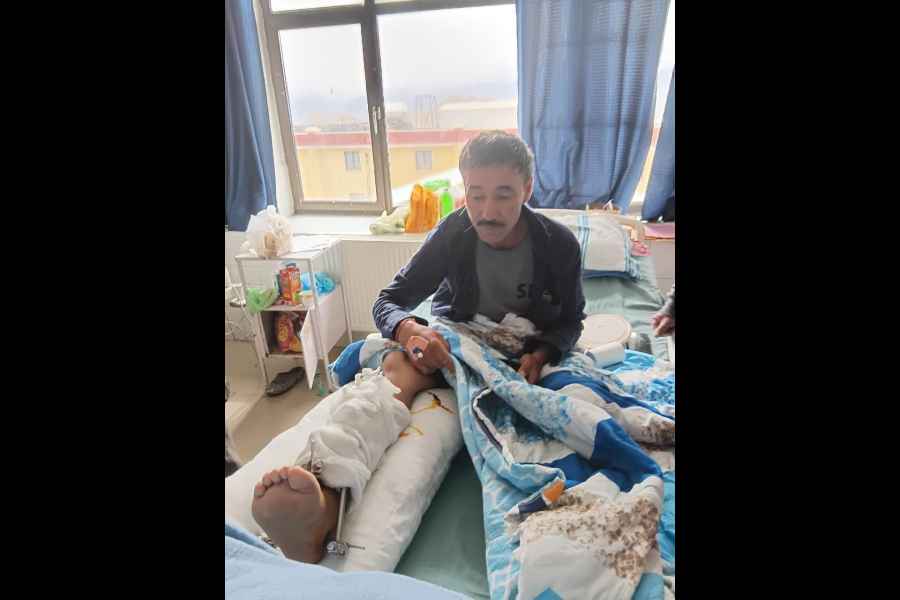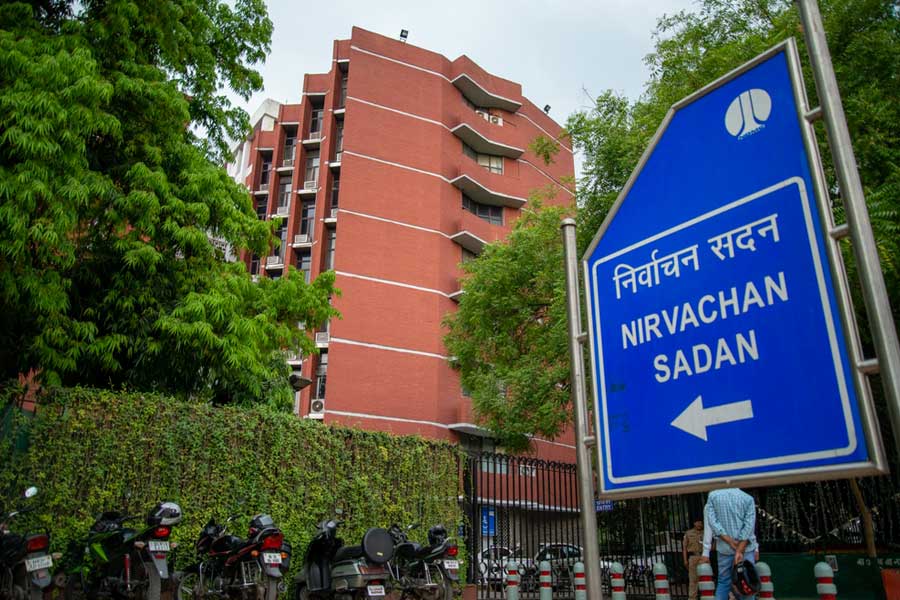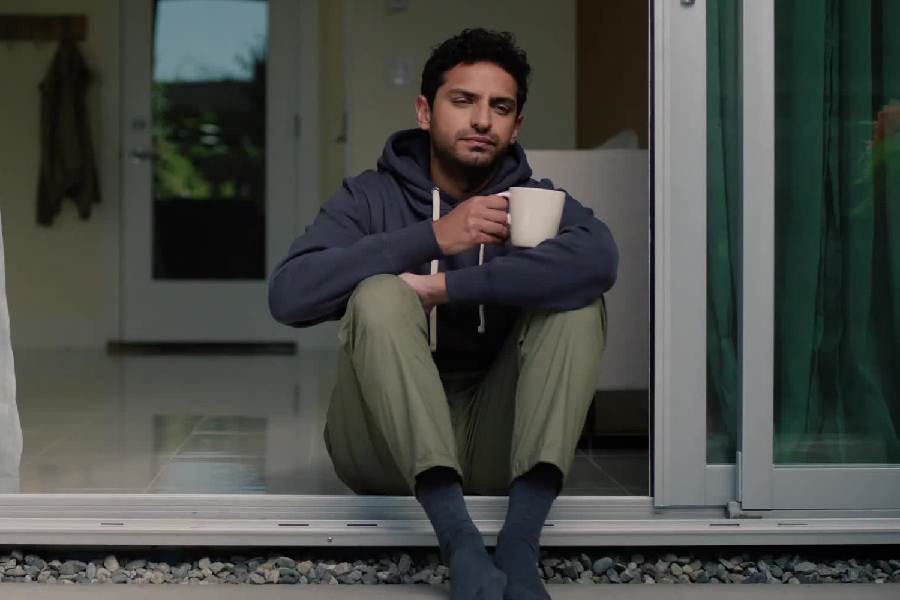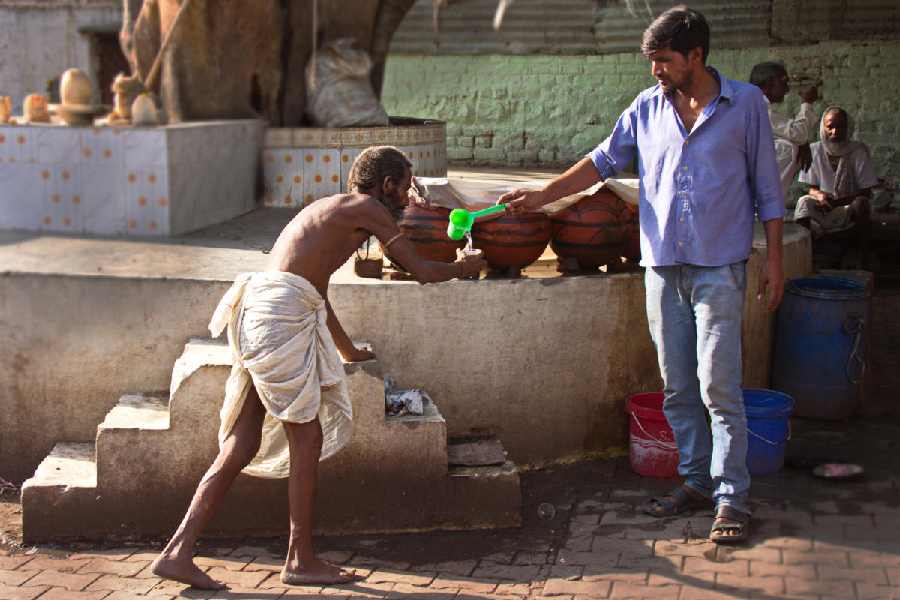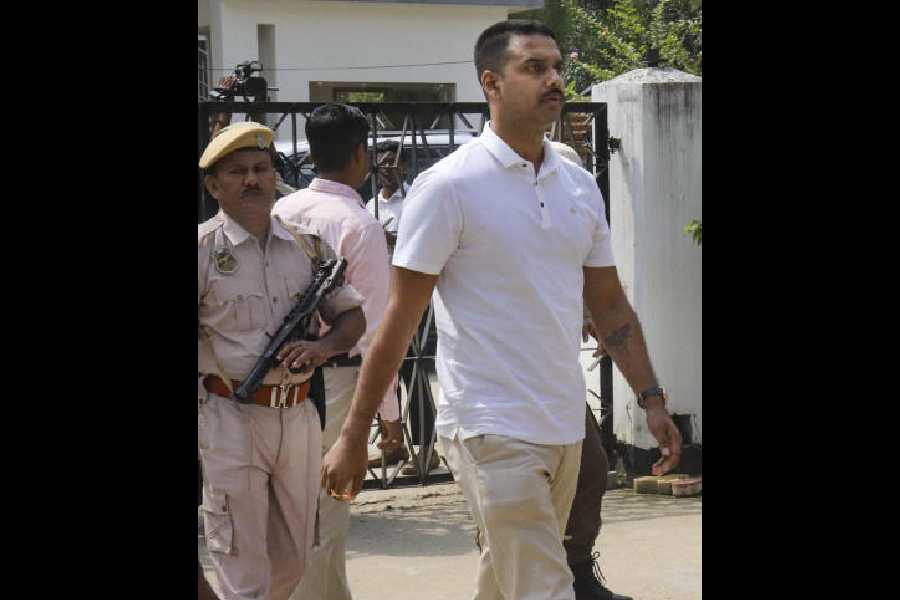|
|
It was only this monsoon that Phanse was battling for his life in a Pune hospital.
One day in his month-long stay in the ICU, when his condition was especially serious — he was bleeding internally, in a coma and on the ventilator — his doctors told his family that things did not look too good for him.
“I told his sister that it may be best to let him go. He was suffering too much,” says Phanse’s cousin Prithviraj Chitnis, a well known restaurateur in Pune.
But Sangeeta Gupte, Phanse’s sister, was not one to give up. “We have gone through several rough times with my brother’s health over the last 8-10 years, but this time I strongly believed that nothing would go wrong with him,” she says. “When my mother begged me to save her son, I calmly told her that he would be all right.”
When he looks back at the moment, Chitnis wonders if he had said the right thing. The experience has also lead him to realise that “nobody can put a cut off point and say this is how long the patient needs to be given before pulling the plug.”
Today Phanse says he’s happy to have had others fighting for him. “It feels good to know you are loved,” he smiles.
Phanse has had a lucky comeback. But many others like Aruna Shanbag, the 61-year-old former nurse of KEM Hospital, Mumbai, who has not been able to step out of bed for the last 36 years, remain in limbo in the absence of any legislation that says that it’s all right to let go of your loved ones to save them further pain.
It is encouraging that the state is beginning to open its mind to euthanasia. In January this year, the Kerala Law Reforms Commission presented the Kerala Terminally Ill Patients (Medical Treatment and Protection of Practitioners and Patients) Bill. This includes “strict conditions and safeguards” for the terminally ill “without reasonable prospect of continuing life” and allows them to put an end to their “unbearable and pitiable existence” under the supervision and advice of close relatives and medical practitioners.
The commission, chaired by the retired Supreme Court judge, V.R. Krishna Iyer, justifies its pro euthanasia stance in its latest report. “Life is sacred, but intense pain with no relief in sight is a torture which negates the meaning of existence.”
“The right to life includes the right not to live,” says Justice Hosbet Suresh, retired judge of the Bombay High Court.
The Law Commission of India in its 2008 report shares the same view. The report states, “The right to live would mean the right to live with dignity up to the end of one’s natural life. Thus, the right to live would include the right to die with dignity at the end of life and it should not be equated with the right to die an unnatural death curtailing the natural span of life.
“Hence, a dying man who is terminally ill or in a persistent vegetative state can be permitted to terminate it by the premature extinction of his life. However, this is not a case of extinguishing life but only of accelerating the process of natural death which has already commenced.”
Perceptions on matters of life and death have clearly changed. In the 1996 Supreme Court judgement in the Gian Kaur vs State of Punjab case, the ‘right to life’ as embodied in Article 21 of the Constitution, could not be interpreted as the ‘right to die.’
“For the same reason, the ‘right to live with human dignity’ could not be stretched to the ‘right to terminate natural life’, at least before the commencement of the natural process of certain death,” the five-judge Constitution Bench of the apex court ruled.
The only way to euthanasia, the five-member bench in the Gian Kaur case said, was through legislation, which can ensure that such “legalised killing” can be carried out subject to “supervision and control.”
Without a law on euthanasia, families of patients caught resorting to it could find themselves charged under Section 309 of the Indian Penal Code with aiding and abetting suicide.
In his judgment in P. Rathinam vs Union of India (1994), Justice B.L. Hansaria says, “Euthanasia is not much unrelated to the act of committing suicide inasmuch as wherever passive euthanasia has been held to be permissible under the law, one of the requirements insisted upon is the consent of the patient or of his relations in case the patient be not in a position to give voluntary consent.”
However, Justice Lodha in the Naresh Marotrao Sakhre vs Union of India case distinguished suicide from mercy killing, saying that suicide was an act of self destruction or termination of one’s life without the aid or assistance of any other human agency, unlike euthanasia or mercy killing, which involved another human agency.
Thus, mercy killing was not suicide, and thereby not covered by the provisions of Section 309 of the Indian Penal Code, the judge added. “The two concepts are both factually and legally distinct. Euthanasia or mercy killing, therefore, was nothing but homicide whatever the circumstances in which it is effected,” Justice Lodha concluded.
If euthanasia is allowed, however, the need for safeguards against malpractices is important, going by the way medicine is practiced today, says Dr Amar Jesani, a medical ethics consultant in Mumbai.
In the Netherlands, where euthanasia is legally permitted, the process of releasing the patient (who would have to be conscious) has to be performed by a physician in consultation with an independent physician colleague who has “experience in the field.”
For a doctor to become party to such an event would mean going against the Hippocratic Oath whereby he swears never to harm anyone or “to please no one will I prescribe a deadly drug, nor give advice that may cause his death.”
The issue presents a dilemma, of course.
In the early eighties, Dr Jesani recalls the mother of a one-year-old baby shouting at him to stop resuscitating the baby, who she said had suffered enough and should be allowed to die.
It is difficult for relatives of patients who are in a coma to wait upon their loved ones indefinitely, not knowing what the next moment will bring, says Aleeka, whose mother slipped into a coma in July this year, a couple of days after bypass surgery at a Pune hospital. “Even though most visitors felt my mother was far gone, I believed she was listening to me, going by the way her eyeballs moved under shut eyelids,” says Aleeka.
On a certain day, Phanse says he briefly returned to consciousness. “I was having a conversation with God — whose voice I recall as being clear and audible. He said ‘come unto me.’ I said I was ready but my mother was not. That’s when I felt he let me go. I felt at peace for those few seconds.”



